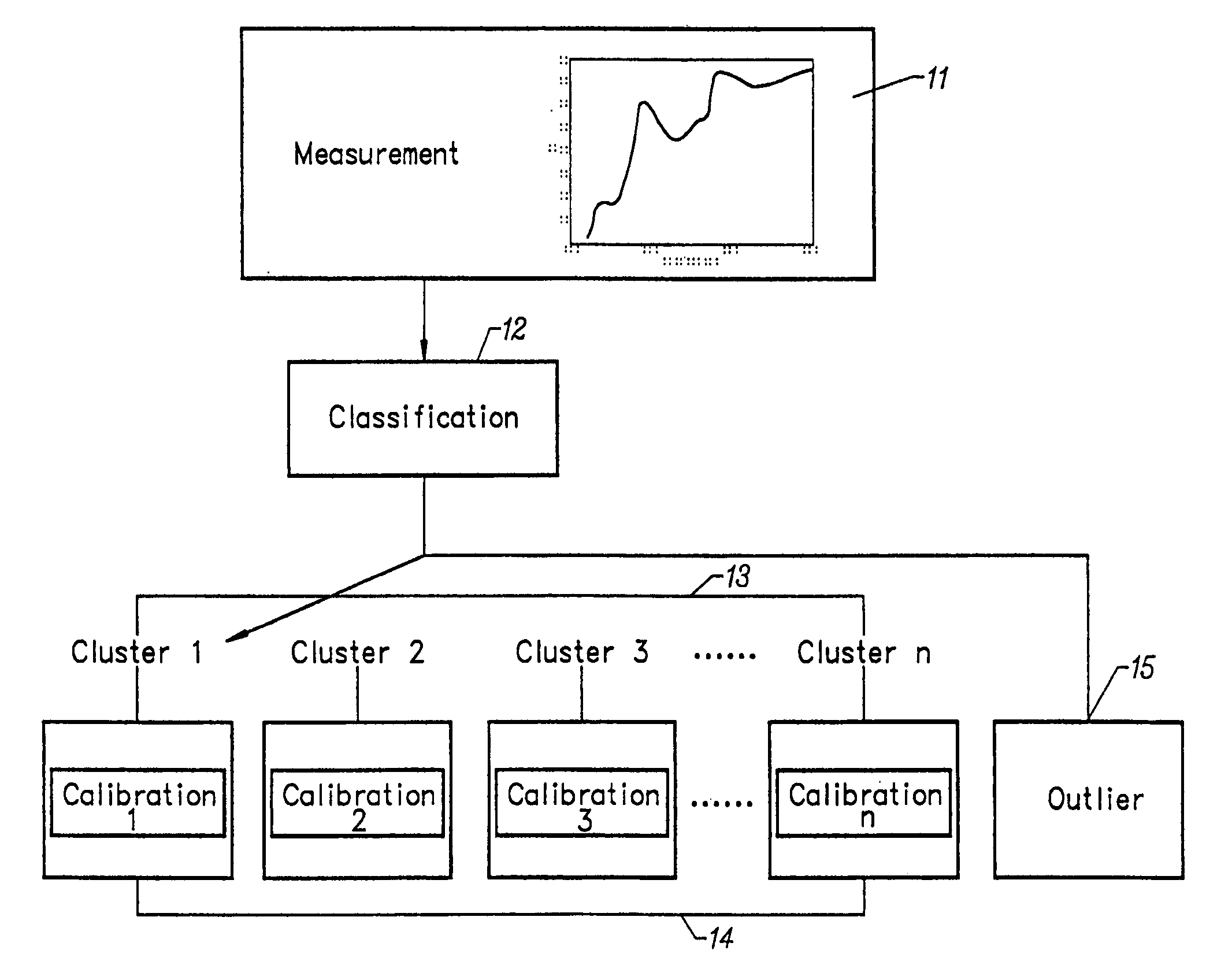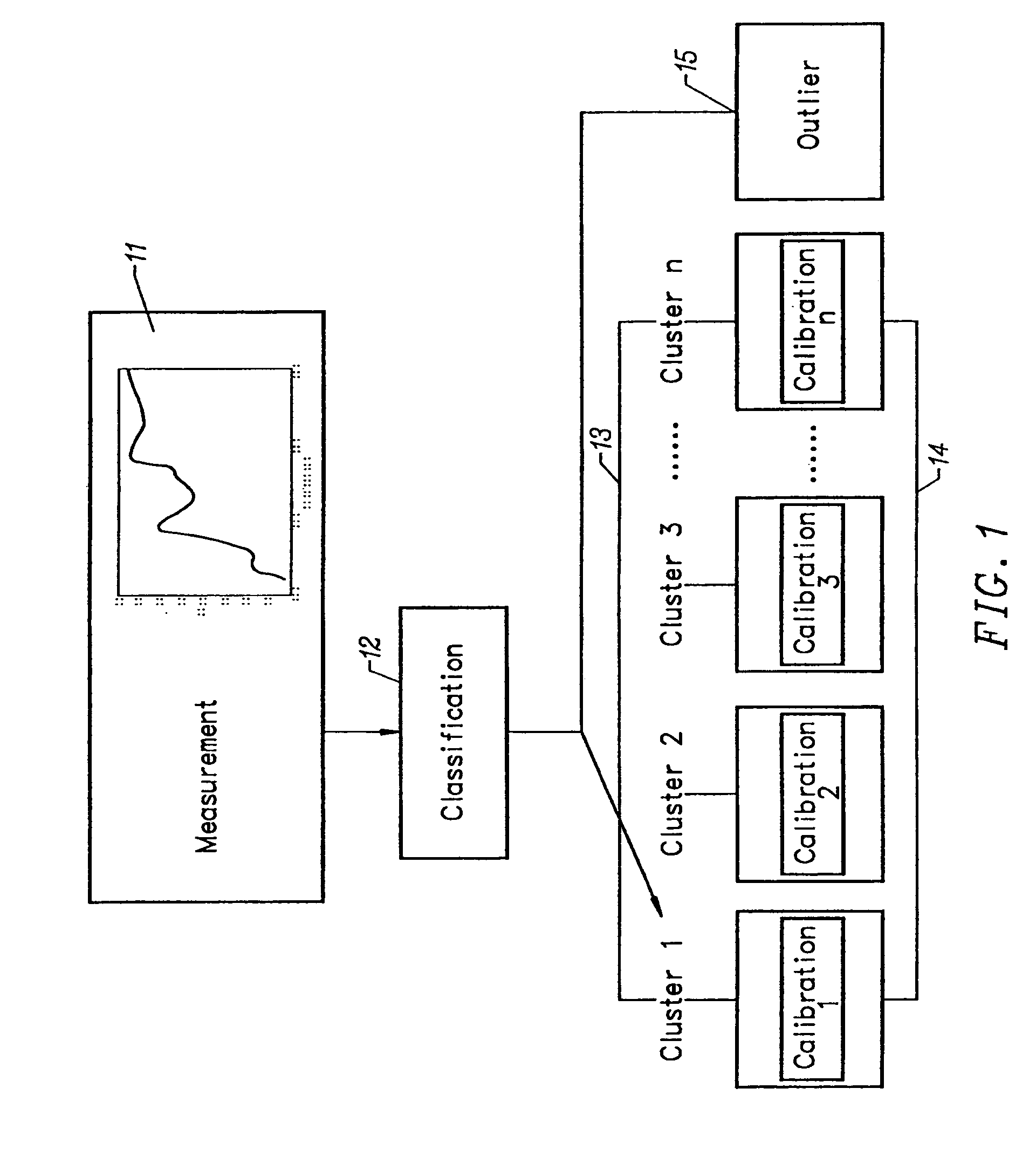Method of characterizing spectrometer instruments and providing calibration models to compensate for instrument variation
a technology of spectrometer and calibration model, applied in instruments, optical radiation measurement, diagnostics using spectroscopy, etc., can solve the problems of instrument spectral response variation, time-consuming and expensive calibration data sets, and inability to adapt to the production of similar instruments produced by other manufacturers, so as to achieve significant reduction of the number of calibration transfers
- Summary
- Abstract
- Description
- Claims
- Application Information
AI Technical Summary
Benefits of technology
Problems solved by technology
Method used
Image
Examples
Embodiment Construction
[0017]The invention provides a method of characterizing spectrometer instruments by classifying spectral responses from a large number of spectrometers (analyzers) into a limited number of previously defined clusters. The clusters constitute groups that are defined based on the similarity of specific features. Grouping of instruments according to spectral features and performance characteristics reduces the spectral variation between instruments in a given group. Therefore, spectral measurements corresponding to an individual cluster are more homogeneous than those from the entire group of analyzers. Calibrations created for each cluster may then be used for subsequent analysis. The calibration created for a cluster has instrument variations included in the model that mirror variations resulting from the particular analyzer employed for the subsequent analysis. Calibration models specific to the clusters are expected to be less complex and have an improved level of accuracy. Therefo...
PUM
| Property | Measurement | Unit |
|---|---|---|
| spectrum | aaaaa | aaaaa |
| concentration | aaaaa | aaaaa |
| current spectral response | aaaaa | aaaaa |
Abstract
Description
Claims
Application Information
 Login to View More
Login to View More - R&D
- Intellectual Property
- Life Sciences
- Materials
- Tech Scout
- Unparalleled Data Quality
- Higher Quality Content
- 60% Fewer Hallucinations
Browse by: Latest US Patents, China's latest patents, Technical Efficacy Thesaurus, Application Domain, Technology Topic, Popular Technical Reports.
© 2025 PatSnap. All rights reserved.Legal|Privacy policy|Modern Slavery Act Transparency Statement|Sitemap|About US| Contact US: help@patsnap.com



